In Willy Edel’s fantastic article about the Naya deck he played at Grand Prix Guadalajara, he mentioned the concept of an “On Demand” deck. The premise is that decks that are built as metagame decks aren’t ones that you should just copy decklists and play. Instead, he told his friends to list three decks they wanted to beat in game one, three decks they wanted to beat post-board, and two decks they were fine not having much for, and he would send them a list.
That process got Matej Zatlkaj to Pro Tour Dragon’s Maze, where he finished in the Top 8.
I’ve basically done the same thing whenever anyone has asked me for a decklist, since most of my decks are reactive decks. After seeing me and Willy talk about it on Twitter, Carlos Moral asked me for an “On Demand” U/W/R deck for his WMCQ and I was happy to oblige. By the time I finished building the deck, it heavily resembled Ken’s winning deck from SCG Dallas.
It also looked pretty damn good.
Creatures (5)
Planeswalkers (1)
Lands (24)
Spells (30)

I decided to play it at the StarCityGames Open in Baltimore last weekend, dropping at 2-2. Meanwhile, several of my friends were tearing up the Open with a variety of green-based midrange decks. Once the Top 8 was set, I was kind of disappointed. It looked like the deck I built would have done pretty well in that Top 8, but I had to make it there first.
Is U/W/R bad? Hardly, but it’s got a lot of problems.
The combination of Pillar of Flame, Turn//Burn, Warleader’s Helix, and Supreme Verdict do a number on creature decks. Sometimes you don’t draw the right answer to their threat, but most of the time you see enough cards to find what you need. Plus, most of your answers overlap, and cards like Restoration Angel do good work blanking a number of their threats at a time.
Decks like Junk Reanimator are very good at doing fair things, most of which U/W/R doesn’t care about. The only thing that really matters is Acidic Slime. U/W/R can handle getting Slimed once or twice usually, but any more than that and it’s essentially lights out. Losing too many lands will make Sphinx’s Revelation worse, Aetherling worse, and make it so you can’t play two or more spells in the same turn. Eventually, Junk’s efficiency will take over.
It’s not an unwinnable matchup by any means, but the games where they have Acidic Slime and the ones they don’t are very different. In fact, if I could ban Acidic Slime, I might play U/W/R again.
The other deck I lost to was Bant Flash. Overall, it should be a pretty close matchup but I got tempo’d relatively easily by Advent of the Wurm. If that matchup became more prevalent, there would be simple solutions.
When Ken-Min Yeoh won the Open with a nearly creatureless version of U/W/R, it rocked my foundation of what I thought U/W/R had to be in order to be a player in the metagame. In my mind, the selection, velocity, card advantage, and ability to switch roles, all gained from playing Restoration Angel and Augur of Bolas, was necessary.
Thought Scour, Augur of Bolas, Snapcaster Mage, Restoration Angel, Sphinx’s Revelation, and to a lesser extent, Think Twice make up the foundation of the Flash deck. Without each of those cards, the deck isn’t smooth, it misses land drops, and it doesn’t find answers quick enough. Most of all, it’s pigeon-holed into always being the control deck, which is not good in this format. As all of you have likely realized at one point or another, you can’t answer every threat.
Maybe going the route that Matt Costa and Dave Shiels went for the last Invitational is correct. They had Thundermaw Hellkites, which allowed them to pressure decks like Junk Reanimator and the control mirror, which I didn’t like at the time. Thundermaw attacks well and sometimes it blocks well, but it doesn’t give you a whole lot of options. It does give you a potentially different game plan though.
The biggest issue with the deck was that I always felt like I was a turn behind. In order to regain lost tempo, I needed to resolve something like Supreme Verdict or Warleader’s Helix quickly, and if I didn’t, then I lost. With the creatures, I could progress my board in a proactive manner and hopefully keep parity. Aetherling was much worse than I anticipated, which further compounded matters.
For those of you who are willing to stick it out with U/W/R, I applaud you. As for me, I currently have an ad up on Magic Online attempting to sell my Sphinx’s Revelations.
The cards I’ve bought so far?
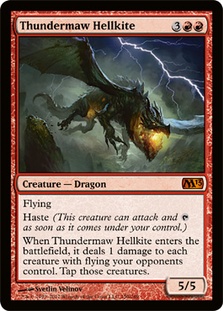
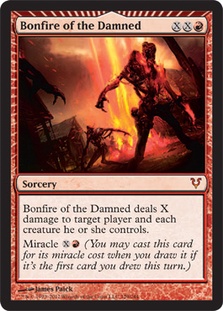
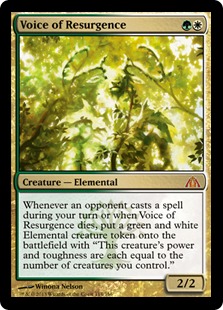
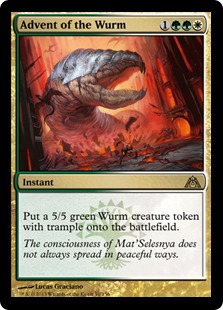
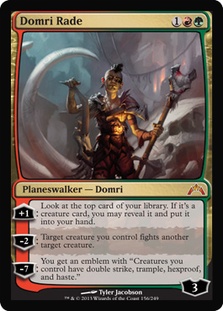
Gross! [Editor’s Note: Welcome to the dark side]
Perhaps my new haircut, which I deemed “Swemo (Swedish Emo) Kibler,” has taken over my psyche.
Last week, I commented on the rise of Naya and how it will likely be the next big thing. Baltimore strongly indicated that was the case as well, so now I’m trying to hop on the bandwagon. As a brewer, tuner, and someone who very much wants everything to be perfect, I’m not about to commit to something without examining my other options first.
We have Ken Yukihiro’s deck, Willy Edel’s deck, Aaron Barich deck, and everything in between. Based on curve, the options are:
One Mana
From what I’ve seen, Dryad Militant goes dead very quickly. Things like Rancor and Ghor-Clan Rampager certainly help in that regard, but is it enough? The miniscule amount of disruption it provides isn’t enough to sway me to its side.
Whether I play one-drop accelerants depends on the type of deck I want to build. Before I know that, I need to see what’s available.
Two Mana
- Flinthoof Boar
- Gyre Sage
- Burning-Tree Emissary
- Voice of Resurgence
- Strangleroot Geist
- Call of the Conclave
- Thalia, Guardian of Thraben
As Aaron noted in his article, you shouldn’t be playing Burning-Tree Emissary in an otherwise midrange Naya deck. Granted, I like Experiment One because any relevant body you can add to the board makes a huge difference, especially against R/G and their Firefist Strikers. Burning-Tree can accomplish the same thing, but it’s rare that you’ll have a follow-up.
Flinthoof Boar is alright and does a lot of work against opposing 2/2s while Gyre Sage is almost always worse than Experiment One.
Three Mana
Contrary to popular belief, removing a color from the deck doesn’t actually make the mana any better. Things like Call of the Conclave and Loxodon Smiter, while probably weaker than Strangleroot Geist and Silverblade Paladin, are much easier to cast.
Four Mana
Five Mana
Six Mana
Spells
- Rancor
- Boros Charm
- Oblivion Ring
- Searing Spear
- Bonfire of the Damned
- Mizzium Mortars
- Selesnya Charm
- Pillar of Flame
- Sphinx’s Revelation
- Domri Rade
- Farseek
- Garruk Relentless
- Garruk, Primal Hunter
OK, so maybe the Sphinx’s Revelation shouldn’t be in there…
Sideboard
- Unflinching Courage
- Ray of Revelation
- Possibility Storm[/author]“][author name="Possibility Storm"]Possibility Storm[/author]
- Assemble the Legion
- Rest in Peace
- Ground Seal
- Ruric Thar, the Unbowed
- Volcanic Strength
- Zealous Conscripts
- Fog
- Electrickery
- Blasphemous Act
Based on Patrick Chapin chart from earlier in the week, we can see what to expect, and therefore build our deck based around that plus how we think things will change going forward.
With Thalia, Guardian of Thraben, difficult to remove monsters, Assemble the Legion, Boros Charm, Domri Rade, or even Possibility Storm[/author]“][author name="Possibility Storm"]Possibility Storm[/author] and Ruric Thar at our disposal, the control matchups are as easy as you’d like them to be.
For now, I’m playing on Magic Online where control is scarce, so I’m focused on beating creatures. That means Dryad Militant is out, and I’m looking at including Huntmaster of the Fells and Restoration Angel. Thragtusk and Thundermaw Hellkite are both solid, but against different decks. A split would be reasonable, but it’s probably better to go with Thundermaw. It does more work in your bad matchups and isn’t bad in your good matchups. The other reason to go that route is because Thragtusk might not even be the best sideboard card against aggressive decks.
The list I want to play is remarkably similar to Brian Kibler from Pro Tour Gatecrash. I’ve been playing close to this online:
Creatures (30)
- 2 Arbor Elf
- 4 Avacyn's Pilgrim
- 3 Huntmaster of the Fells
- 3 Restoration Angel
- 3 Thundermaw Hellkite
- 3 Loxodon Smiter
- 4 Experiment One
- 4 Boros Reckoner
- 4 Voice of Resurgence
Planeswalkers (3)
Lands (21)
Spells (6)

Honestly, my results haven’t been stellar and I’m not a huge fan of the deck. It’s just not my style, but that said I think it’s a very good shell and I will continue to work on it.
I’m about even against R/G (which is frustrating) and I haven’t won a game where Angel of Serenity has entered the battlefield. I started with a version closer to Aaron’s, but quickly moved up the midrange scale to have a better fighting chance against R/G Aggro and Junk Reanimator.
The R/G matchup is frustrating because, on one hand, you should be completely dominating them. There’s Boros Reckoner alongside other fat creatures, mana acceleration, life gain, and removal. What could possibly be going wrong?
For starters, the onus is on Naya to do something meaningful. R/G can curve out nearly every game and end the game with a wide variety of reach. To its credit, Naya is capable of doing the same, but R/G is typically faster.
This is where the importance of things like Experiment One comes in. If, by turn three, you only have a three-drop in play, you aren’t going to win. Ghor-Clan Rampager and Firefist Striker won’t care, and neither will a couple of Hellrider-fueled alpha strikes.
When Naya loses to R/G, it’s because they never got a chance to cast all their spells. Meanwhile, R/G enjoys a comfortable tempo advantage. Flinthoof Boar would be nice here, and Strangleroot Geist is fine, but hard on the mana. With both players having access to aggression and ways to break stalls, tempo is the most important aspect of the matchup.
Bonfire of the Damned versus Mizzium Mortars is a tough call. Most people seem to be on the Mortars side of things now, but I only like Mortars if I’m using the Flame Slash mode a significant portion of the time. In the majority of my games, being able to sweep things at a discount was very relevant, as was avoiding the RRR cost. Plus, Miracle-ing a Bonfire in the late game is almost always game over, whereas Mortars might come up short.
On the other hand, I’ve lost to Volcanic Strength a few times, but I’ve also been boarding in answers to a guy with Volcanic Strength on it. Shrug.
As I said earlier, Naya is infinitely customizable and largely depends on the metagame. If you want to try it, form your own opinions first instead of copying mine, Willy’s, Ken’s, or Aaron’s deck.
As for Bant Hexproof, I have a couple good leads on sideboard strategies. PV played four Advent of the Wurm and four Rootborn Defenses in his sideboard at Grand Prix Guadalajara. He used those to be able to side out most of his enchantments against more controlling decks and become a Bant Fish deck. Overall, that plan seems reasonable and it’s certainly better than any other plan I’ve seen.
The other techy card comes from Marijn Lybaert, who suggested the simple but effective Unsummon. Against decks like R/G where, again, tempo is of the utmost important, he cited Unsummon as a defining factor in whether he won or lost. Something like Fog is also acceptable, but R/G is probably boarding in Skullcrack in an attempt to race Unflinching Courage anyway. Being able to Unsummon their Stromkirk Noble or Hellrider will buy you a lot of time.
Once I was out of contention in Baltimore, I dropped to play in some Win-A-Boxes with my Mono-Red Blitz deck. Out of the two tournaments I played in, I won both thanks to discovering Krenko’s Command at the last second.
Some further playtesting brought me to this list:
Creatures (31)
Spells (29)
Sideboard

The deck is a ton of fun and it was nice to be out of my element. I had difficulty sideboarding on the fly and had some crazy decisions to make, so it was well worth it.
Even though my tournaments didn’t go very well, it was pretty awesome seeing Brad Nelson and Todd Anderson take home the trophies. Their success makes me hungry for my own, as it’s been a while since I’ve made Top 8 in something.
I’m coming for you boys.
GerryT
